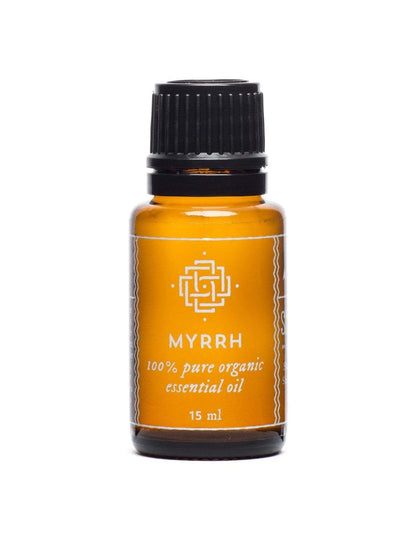Botanical Name: Commiphora Myrrha
History: Myrrh has been so valuable at times in ancient history that it has been equal in weight value to gold. During times of scarcity, its value rose even higher than that. It has been used throughout history as a perfume, incense and medicine.
Myrrh was very popular in the ancient world and was used as a medicine by the Chinese and Egyptians, and as part of the Egyptian sun-worshipping ritual and mummification. It was used in cosmetics, while Greek soldiers took a phial of Myrrh oil with them into battle, to stop bleeding wounds.
Myrrh has been used from remote ages as an ingredient in incense, perfumes, etc., in the holy oil of the Jews and the Kyphi of the Egyptians for embalming and fumigations. It is mentioned in an Egyptian papyrus dated 2000 B.C.Myrrh has been used for centuries as an ingredient in incense, perfumes, and for embalming and fumigation in Ancient Egypt.
In folk tradition it was used for muscular pains and in rheumatic plasters. Called mo yao in China, it has been used since at least 600B.C. primarily as a wound herb and blood stimulant. Gerard said of myrrh ' the marvelous effects that it worked in new and green wounds were here too long to set down...' Myrrh Oil, distilled from the resin, has been used since ancient Greek times to heal wounds.
Properties: Myrrh Essential oil is particularly valuable for people who feel stuck emotionally or spiritually and want to move forward in their lives. Seems to lift feelings of weakness, apathy and lack of incentive and also has a cooling effect on heated emotions.
Benefits: Myrrh oil is known to be of great benefit to the respiratory tract, the digestive system, for gum and mouth relief, and in skin care. Myrrh oil may be effective against excessive mucus in the lungs and assist with relief, clearing ailments associated with the common cold. Myrrh Essential Oil is thought to enhance spirituality. Aromatherapists use it as an aid in meditation or before healing. Its actions are characterized as the following: antimicrobial, antifungal, astringent and healing, tonic and stimulant, carminative, stomachic, anti-catarrhal, expectorant, diaphoretic, vulnerary, locally antiseptic, immune stimulant, bitter, circulatory stimulant, anti-inflammatory, and antispasmodic.
Parts Used: gum resin from the stem
Color: pale yellow to amber
Consistency: Medium
Extraction Method: Steam distillation of the gum resin
Note Classification: Middle
Aroma Description: Warm, sweet, balsamic, slightly spicy medicinal scent. warm, slightly musty smell
Aroma Strength: Medium
Blends Well With: benzoin, frankincense, lavender, sandalwood and clove
Cultivation: Wild harvested
-
These statements have not been evaluated by the Food and Drug Administration. This product is not intended to diagnose, treat, cure or prevent any disease.
 Fair and ethically
Fair and ethically traded products
- Offering authentic, sustainable products that support artisans, their families, and indigenous ways Learn More...
 Providing a connection to the sacred
Providing a connection to the sacredarts of indigenous communities
- Consciously serving our community for over 22 years with integrity and passion Learn More...
 Living in harmoney with each other
Living in harmoney with each otherand our earth
- Reducing our use of resources with Earth conscious shipping and packaging practices Learn More...
 Fair and ethically traded products. Learn More
Fair and ethically traded products. Learn More
- Offering authentic, sustainable products that support artisans, their families, and indigenous ways Learn More...
 Providing a connection to the sacred arts of indigenous communities. Learn More
Providing a connection to the sacred arts of indigenous communities. Learn More
- Consciously serving our community for over 22 years with integrity and passion Learn More...
 Living in harmoney with each other and our earth. Learn More
Living in harmoney with each other and our earth. Learn More
- Reducing our use of resources with Earth conscious shipping and packaging practices Learn More...




